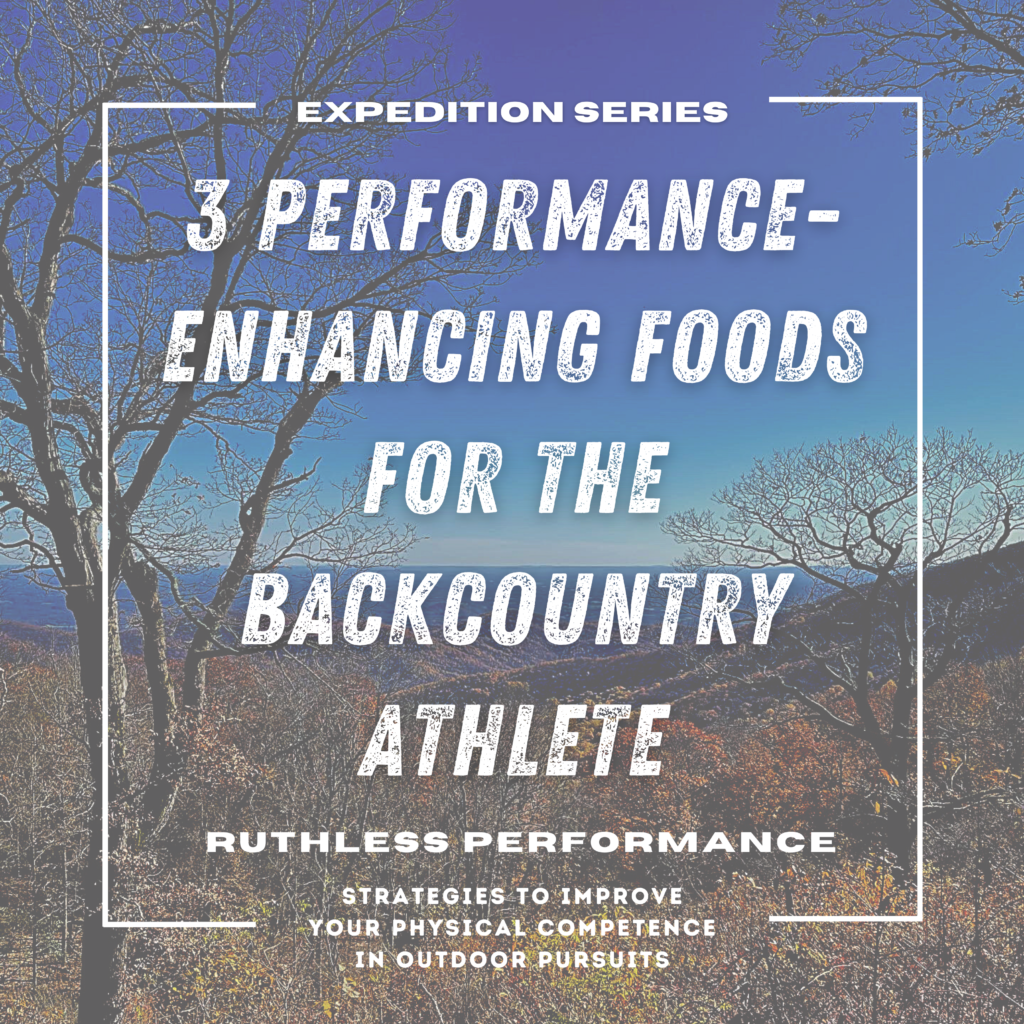As I write this, I’m sitting between two hunting trips to Idaho’s remote back country to target a mule deer. This has left me thinking about both what I brought with me, plus what I’ll be bringing with me when I head back out. But just because I’m planning for a solo, backcountry hunt doesn’t mean that you can’t use some of these same nutritional strategies for hunting from a food plot in the mid-west or your tree stand along the mid-Atlantic.

Through my company, Ruthless Performance, I personally work with hundreds of athletes, including hunters looking to maximize their likelihood of success in the field. The hunters that train with me are not immune from the same marketing gimmicks that plague other sports. Supplement companies may be quick to confuse you, to sell you supplement stacks, or otherwise complicate the matter. But I’m here to tell you that fueling your hunt need not be difficult, expensive, or require hours of prep work.

Just like with other athletic endeavors, these supplements may have their place, but a few nutrient-dense foods should be the staple upon which supplements can later be added. Below are three of my favorite foods for packability, nutrient profile, and overall value to the hunting athlete.
3. Almonds
Almonds may seem like an unusual choice, but they are high in minerals, vitamins, calories—all of which your body needs in the back country. And though many of these same nutrients may be found in supplements, natural products tend to have more bioavailability, which is your body’s ability to absorb these nutrients, making almonds a healthier choice.
Almonds are high in magnesium, a mineral rapidly lost during vigorous exercise like you may find yourself doing on big climbs or with a heavy pack. Salted almonds also replenish the sodium similarly lost during the sweating process.

Almonds also contain copper, fiber, protein, and healthy fats. This combination of nutrients facilitates better focus and visual acuity meaning that you’re more likely to see an animal downrange when you’re glassing.
I recommend looking for almonds that are roasted in peanut oil as opposed to other vegetable oils like soybean or canola. I also recommend looking for almonds without any added sugar. Companies love to throw sugar into their recipes to make foods sweeter and therefore more favorable to consumers.
While I’m not opposed to sugar in the back country, I like to keep it out of my almonds or mixed nuts so that way I can snack on them early in the morning without a sugar rush and crash.

2. Coconut Oil
Coconut oil is a remarkable additive to any back-country meal where easy calories are hard to come by. Coconut oil provides a healthy dose of fat which can help counter-balance your ratio of carbs-to-fat, which always turns into a mess in the wilderness.
I add coconut oil to my early morning coffee, this provides those crucial calories, without much change to my blood sugar. Fun fact: since coffee makes your body release sugar from the liver, the coffee will actually raise your blood sugar more than coconut oil will, even though coconut oil is loaded with calories and coffee is a zero-calorie food.
When packing coconut oil, I purchase single-serving coconut oil packets, which can fit almost anywhere in my pack. I load up on these because of their multitude of benefits and uses. If needed, the coconut oil can double as cooking oil. Some other favorite uses of coconut oil are lip balm if my lips dry out in the high alpine air or as a lubricant for my knives or multitools.

1. Fresh Apples
This seems like an unusual choice for my #1 backcountry performance food recommendation but it really is. Not only are apples packable, require no refrigeration, and can survive a variety of different environments and climates, but they are filled with various nutrients that you need.
Apples pack a reasonable amount of sugar, but because of the fiber content, the sugar tends to release slow and not raise your blood sugar like other sugar-containing products. The breakdown of apples in digestion also releases nitric-oxide, a molecule responsible for the expansion of blood vessels, providing more blood to your brain, muscles, and even your eyes.

Nitric-Oxide is hard to come by in the back-country, as most camp foods contain preservatives which hinder your body’s ability to utilize this helpful molecule.
This leads me into my last point on the subject of apples–digestive health.
The value of apples on your digestion is no secret. Among other nutrients within an apple, you’ll find lots of fiber, which helps regulate digestion. Regulating digestion may not be a problem for most, but when you’re eating freeze dried foods, the healthy bacteria in your gut may suffer. Apples help mitigate the damage of freeze-dried foods, ensuring that you’ll get all of the easy-to-prep, highly packable, calorie-dense benefits, while doing less harm to your body’s natural bacterial flora.
If you’re packing some nut butter, you can slice your apple and cover the slices with it for extra calories.

Wrap-Up
If you’re planning on spending as much of the winter in the mountains as I am, you’ll want to make sure your nutrition doesn’t fall apart. These few foods always find their way into my bag, particularly on overnight hunts. Keep your focus by keeping your healthy fat content high, keep your digestive health in place with fiber, and keep pursuing excellence in the field.

